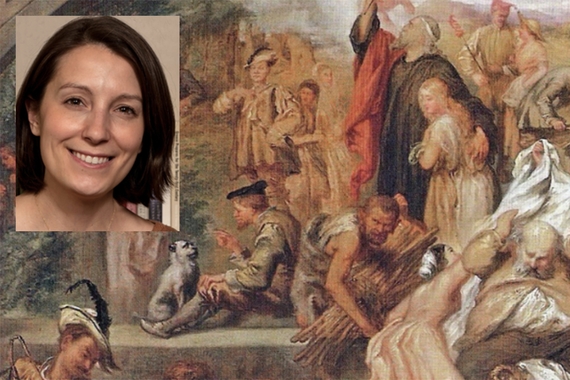Siobhan Craig Wins Top Teaching Prize
The Department of English congratulates Associate Professor Siobhan Craig on receiving a 2023-24 Horace T. Morse-University of Minnesota Alumni Association Award for Outstanding Contributions to Undergraduate Education, the University’s top award for undergraduate instruction. Craig had previously won the Ruth Christie Distinguished Teaching Award in English.
“Professor Craig’s knowledge and passion for the topics covered in her classes, as well as her whole-hearted kindness and generosity with her students, made me want to be an English major,” says former student Emma Schneider (BA 2019), a production designer.
Professor Craig regularly teaches film and film adaptation, the graphic novel, and literary theory through such popular courses as “Our Monsters, Ourselves,” “Theorizing Cinema and the Body,” and “The Western.” In all her classes, she says, “I encourage my students to approach the discipline of English with critical skepticism, understanding the historical development of ‘literature’ as a concept.”
Professor Craig has acted as sole advisor for nine summa cum laude theses, served on eight summa committees, and advised two magna cum laude theses, “a testament to her reputation among undergraduates as an excellent teacher and advisor,” says English Chair Kathryn Nuernberger.
New courses
Nuernberger also cites Craig’s exceptional contributions to academic program development in the department. “As our department’s current Director of Undergraduate Studies (DUS),” Nuernberger says, “Professor Craig has devoted much energy to developing new courses that will diversify our curriculum.”
As DUS, Craig has solicited new course proposals from other faculty, recently helping to shepherd “Alternative Histories” and “Writing the YA Social Justice Novel” into the English undergraduate curriculum. Her own successful course proposals include “Banned Books,” “Engaging Queer Cinema,” and “Adaptation: Literature and Film,” with two more in the works.
Beyond introducing new classes, Professor Craig considers carefully how to teach standard department offerings. As Chair Nuernberger describes, she is committed to diversifying syllabi and to approaching course designs “with new questions that center once-marginalized experiences.”
In one recent example, she focused her “Graphic Novel” course on immigration issues. That frame, says Craig, “encourages students, many of whom come from recently immigrated families, to reflect on their own families’ dislocations.”
She continues, “While I prize refection on personal narratives in the classroom, I also challenge students to engage with historical material, cultural and political analysis, and questions of form.”
Inspiring students
“Her passion for her students’ ideas and research is inspiring,” says former student Allison Vincent (BA 2010, MEd 2011), UMN First-Year Writing Program Teaching Specialist and teaching artist. “As is her ability to encourage curiosity.”
Students appreciate Professor Craig’s own eagerness to learn and to explore. The author of Cinema After Fascism: The Shattered Screen, Craig is now at work on a book about Italian fascist colonialism in Somalia and Libya in terms of its own and later representations. When, after class, a student recounted her family’s experiences of Italian colonialism in Somalia, Craig remembers, “she taught me far more than I taught her."
Alum Vincent values her former teacher’s dedication to creating a classroom space that both respects students’ experiences and challenges them to consider new perspectives. “At a time where ideas and education are being attacked and books banned,” says Vincent, “Professor Craig is creating coursework that encourages undergraduates to fully engage with the complicated, rough edges of literature and history, instead of shying away from them.”



